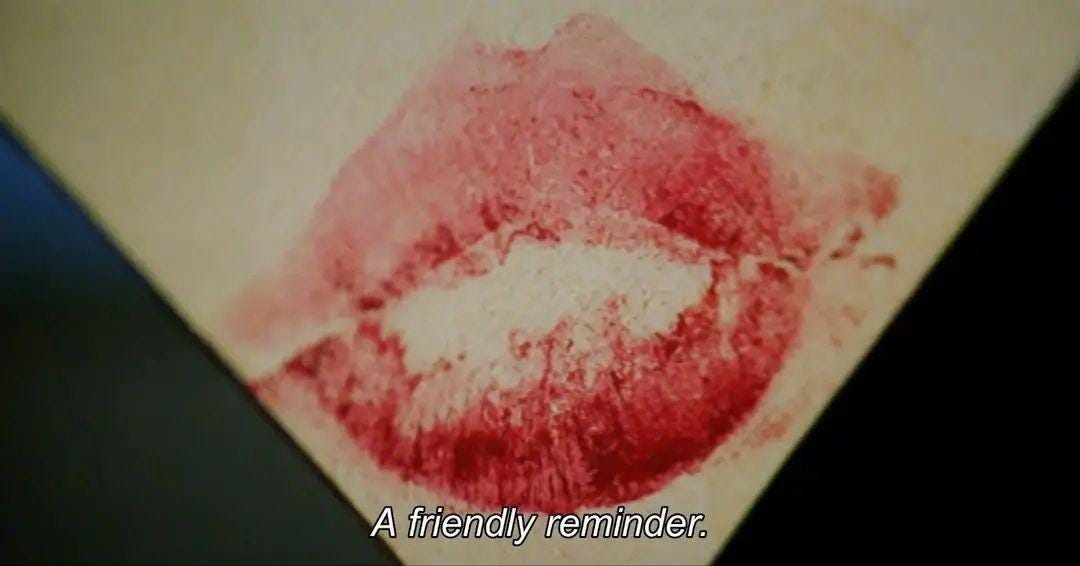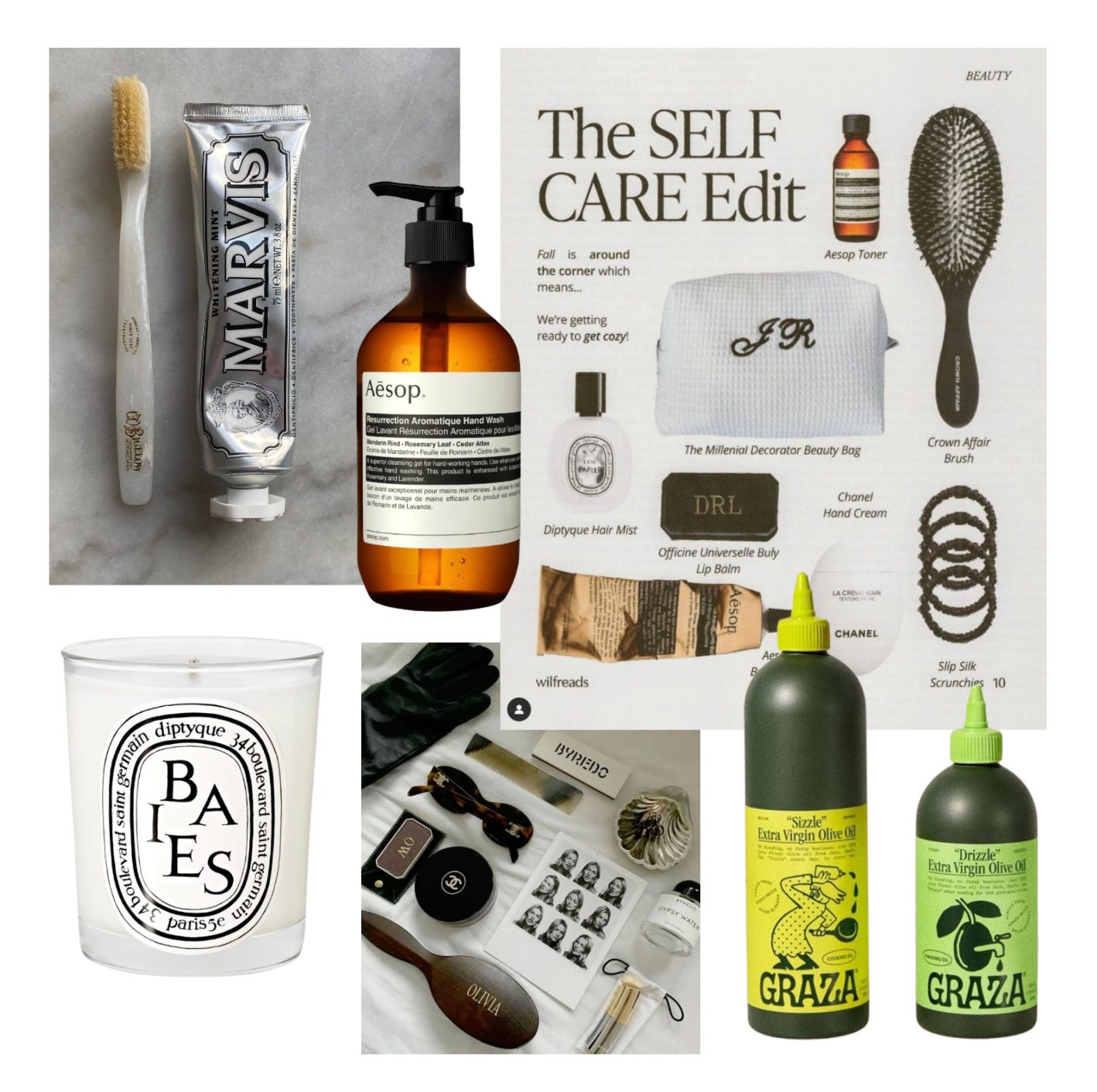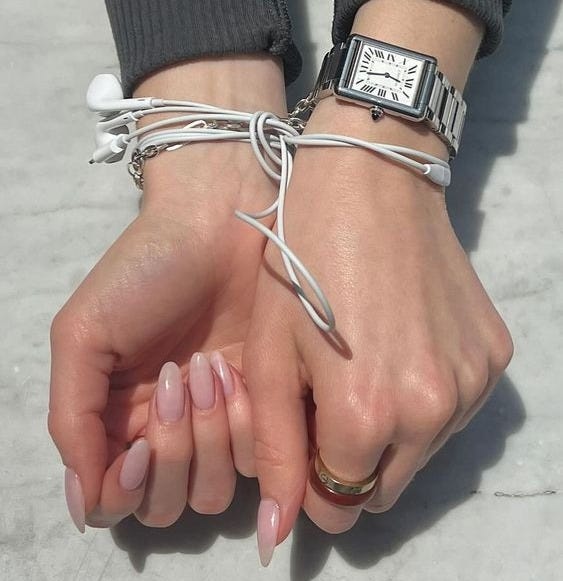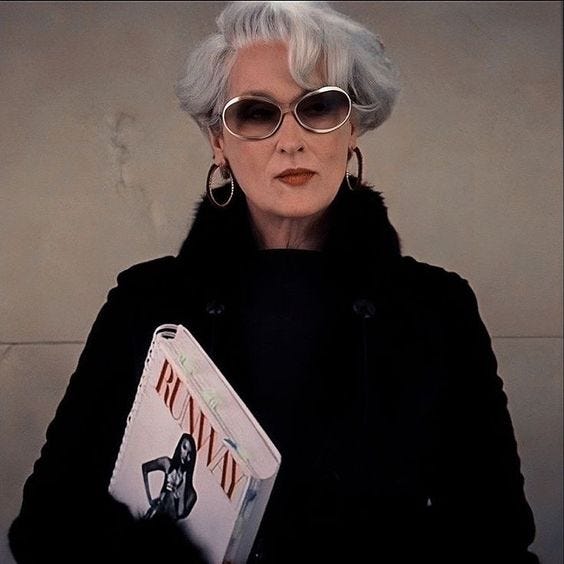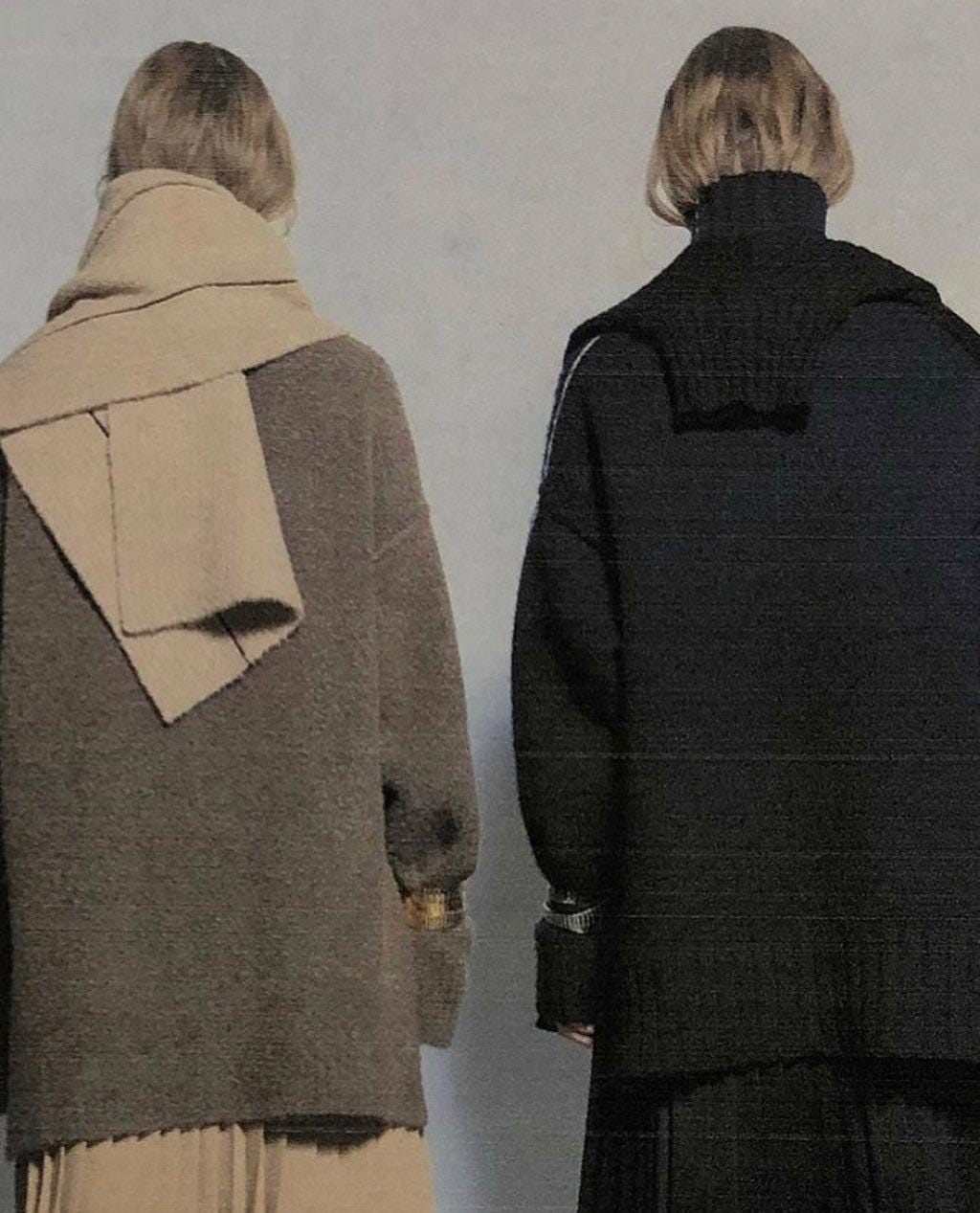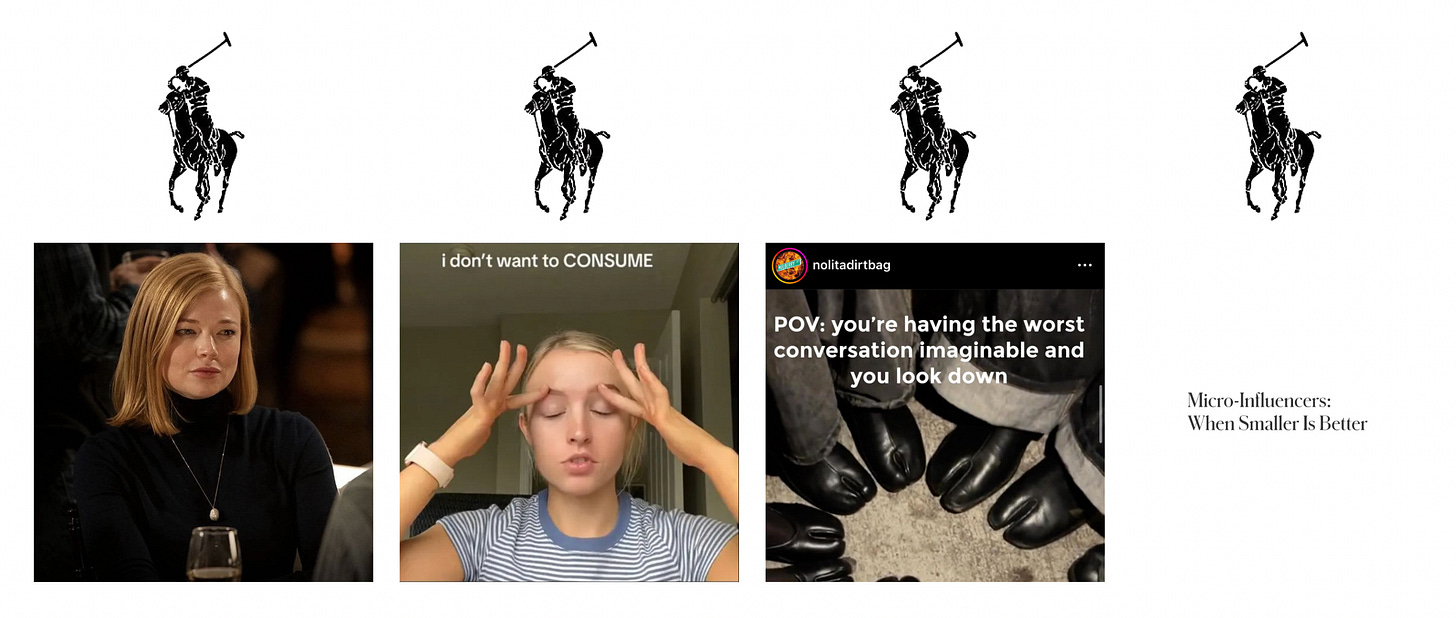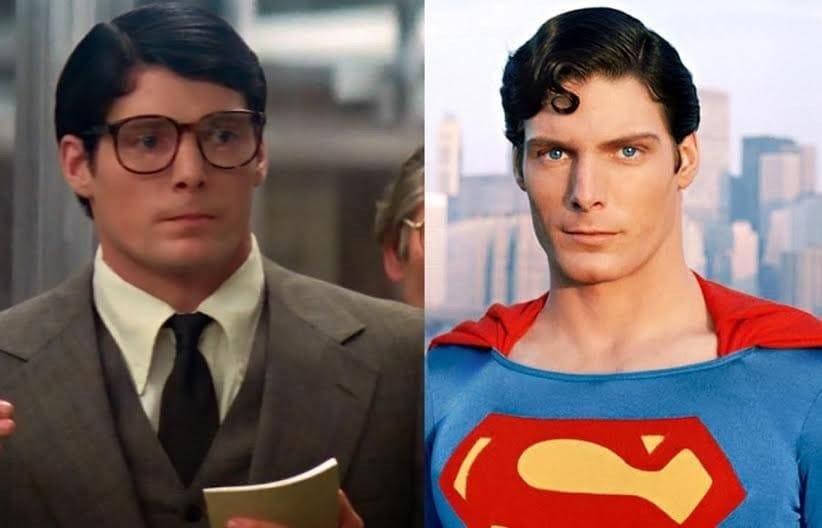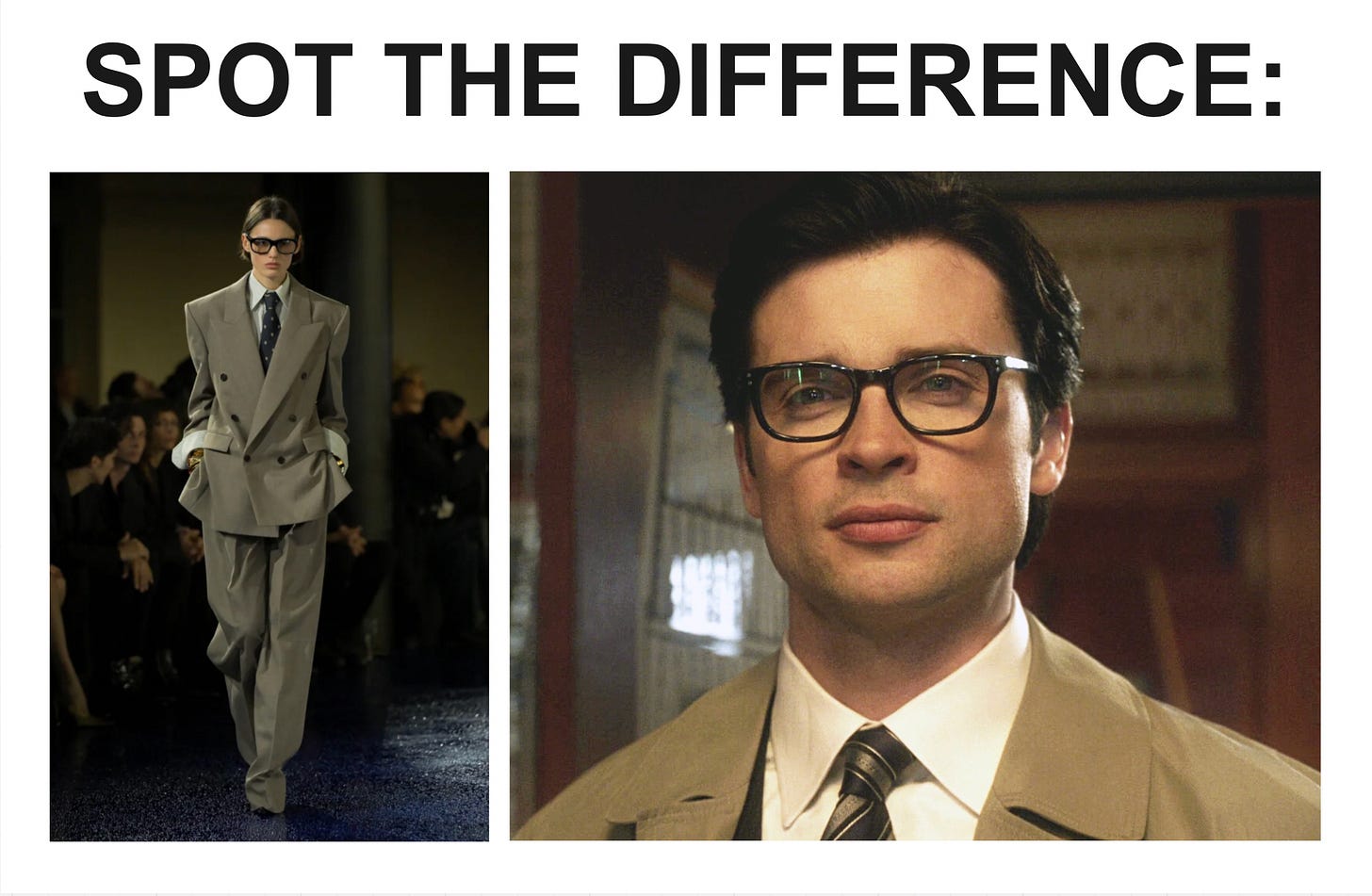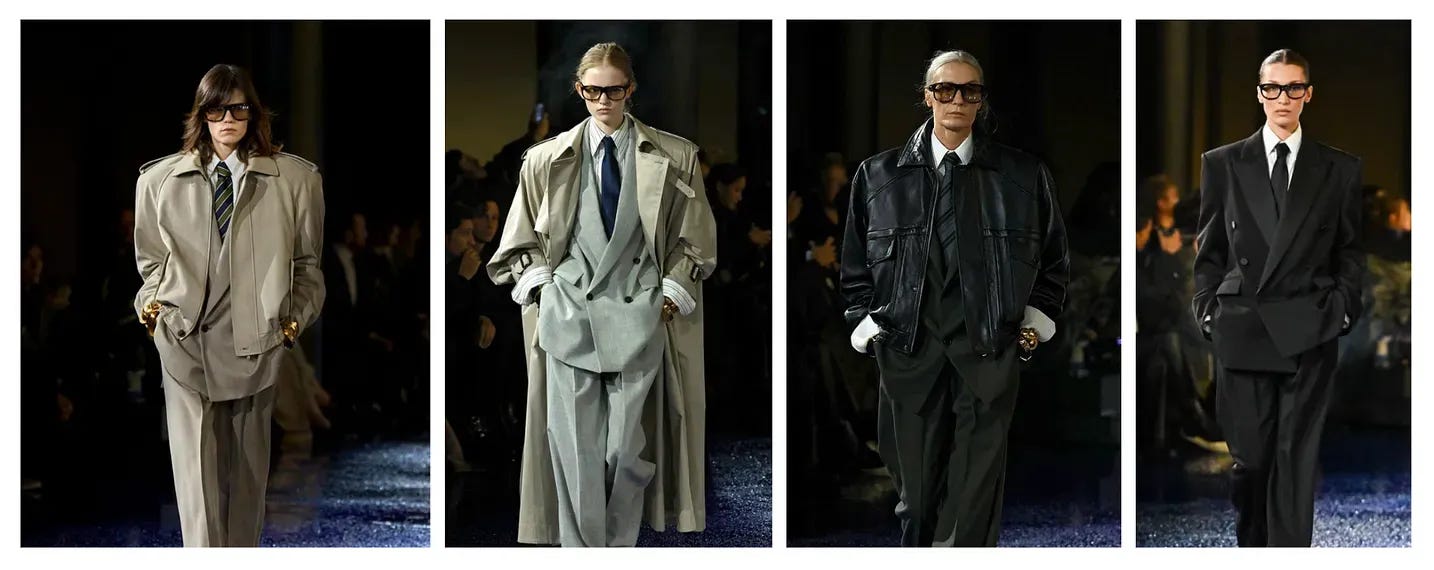Clark Kent Fall, the Lipstick Index, & Luxury Everything
the devil is in the details and she doesn't just wear Prada
~**~ this post cuts off in email so read in app or browser! ~**~
Everything is lipstick
Historically, when the economy struggles, people turn to small, affordable luxuries like lipstick or perfume. These items offer a taste of opulence, despite lowered budgets. This concept, known as the Lipstick Index, has garnered attention recently as expensive perfumes are having a moment, meanwhile economic outlooks waver. But, if we look past its surface-level blotting, we’ll find there’s more to the modern Lipstick Index.
It seems the current uptick in the 'Lipstick Index' reflects not only a faltering economy but also our frustration with overconsumption.
Last week, I talked about underconsumption and slow living— people are tired of accelerated trend cycles and flimsy fast fashion yada yada. Thus we want to buy less, not necessarily due to financial hardship, but rather to escape the retail rat race. Yes, less spending power likely still plays a part, but the root cause of this shift is that people want to wield their power more selectively.
However, capitalism doesn’t just roll over and die because of course, everything is marketable— even slow living. We still yearn for our consumption-based dopamine hits, and so we justify small indulgences. The focus simply shifts from purchase volume, to purchase quality. We streamline our lives, and in the process, want the best of the best. Of everything. Don’t be fooled by its name— the lipstick index extends to all consumer goods. These days, everything, from candles to olive oil to toothpaste, is subject to this theory.
For example, instead of fancy gadgets like a Dyson AirWrap, I might want to buy a hair comb. But not just any comb. I want the perfect, beautiful yet functional comb— a pearlescent one that makes me feel like a mermaid every time I unsheathe it from my similarly-intentionally selected purse. Maybe it’s even monogrammed. And when I find this comb, I’ll probably actually buy it because it’s attainable. Even a “hand-made” Mason Pearson comb starts at ~$20 vs. their $100+ hair brushes, or a $500+ Dyson. Mason Pearson clearly knows how to ride a surge in the Lipstick Index.
Nostalgia
Then there’s the nostalgia piece. If slow living is marketable, then nostalgia sells itself. We’re buying books while listening to retro jazz through our wired earbuds. We want the perfect pen and stationary set for writing letters that we plan to replace our text messages with, and a Diptyque candle to burn while doing so. Isn’t it funny that in 2024 we can buy rainbow LEDs that’ll last us 15,000+ hours, but instead we choose to repeatedly buy $30 candles that last ~100. Nostalgia is the trend that never dies.
I mustn’t fail to note how both nostalgia and slow living reflect a desire to turn back the clock, or at least make time seem to move more slowly. And it works— I find that your time feels more full more when you carefully consider the use and purchase of every product. Finding joy in the mundane is what makes life worth living.
So in tandem, nostalgia and slow-living super-charge the lipstick index.
Details, my dear
The streets are still saying that nothing new is trending this fall. Is that really true? I think what’s novel might just be harder to see. The devil is in the details and she isn’t just wearing Prada this season.
Like the twist of a lipstick tube, we must adjust the focus of our fashion binoculars. Status signifiers are shrinking in size and we’re zooming in. Lipstick and perfume aren’t just affordable luxuries, but rather minuscule details of an ensemble that set it apart from any other.
Quiet Luxury
Quiet luxury was the first horseman of this shrink-pocalypse. Although the trend initially drew inspiration from comfortable, durable ‘timeless’ pieces, for the masses, quiet luxury has become primarily an aesthetic—one that conveys effortless wealth through simple silhouettes and neutral colors.
And now? What I thought in 2021 would be just another microtrend has stuck with us, even as 2025 looms nearer. The fall 2024 fashion meta retains the major aspects of quiet luxury: neutral tones, minimal logos, streamlined shapes, and callbacks to wealthy communities of the past (see: prep/equestrian). Often, subsequent trends eschew what directly preceded them (e.g., skinny jeans —> wide leg jeans). But like the trend itself, quiet luxury’s evolution is more subtle.
Instead we are asking: how can I stand out in this quiet luxury trend-scape? When the minimalistic look is oversaturated and dupe-able within weeks if not days, how do those ‘in the know’ stand out? How do you make your personal style feel personal? The answer is small details.
I mean it’s a large part of our obsession with The Row: take something that on the surface seems ordinary, but optimize every detail to turn it into a luxurious experience. Consumers want to see intentionality. They want to escape the faceless, universally accessible masses of social media, and be part of a more intimate community.
And so follow the other horsemen of the shrink-pocalypse:
As I mentioned earlier, slow living, underconsumption-core, and nostalgia
The rise of niche meme accounts
And brands learning to use micro influencers, with small but extremely loyal followings instead of mass marketing via stereotypical ads and celebrities
Brand Loyalty
Here’s where I see things going from a brand perspective.
As consumers intend to shift away from impersonal retail megalomaniacs like Amazon, Shein, and Temu, they must willingly taking on higher prices, and often slower delivery times. So what is there for consumers to gain? I’d say, a fulfilling experience.
Since we are buying less, each purchase matters more to us. Thus, brand loyalty matters more. As overall purchase volume decreases, instead of competing to just sell more things, brands may pivot to see who can capture the most loyal market share, who will reliably re-buy their luxurious mundane product when their current one runs out.
As we turn towards slow-living, brands must correspondingly turn towards longer term strategies. E.g., spending less money on traditional adverts (Gen Z and Alpha have practically tuned these out), and more money on trusted influencers with vibrant communities. Brands have already shifted to positioning themselves as a lifestyle rather than just a product, another strategy which enhances the customer experience.
In the era of mindful shopping, I too am prioritizing pleasant brand experiences over content itself. If I don’t like the way I’m treated at a restaurant, I’m unlikely to return. Even if the pasta is stellar. If a place accepts my returns with grace, I’m much more likely to become a regular. If I feel like part of a community with similar values, I am more likely to choose a brand’s products.
Clark Kent AKA Superman
The Saint Laurent Spring 2025 runway show in particular caught my eye. Mostly, because it reminded me of one of my favorite characters: Clark Kent. And like both the Lipstick Index and Clark Kent himself, I thought— there’s more here than meets the eye.
The Clark Kent reference is nostalgic but also highlights our collective obsession with superheroes and secret identities. Clark Kent is quiet luxury’s best brand ambassador. He is a regular person in disguise, quiet about his potential for the extraordinary. His unremarkable ensemble intentionally hides his rockin’ bod, superhuman powers, and utterly handsome features. He uses small details, like spectacles, to transform his entire demeanor as well as the way he is perceived.
Bella Hadid walking down the runway, disguised as Clark Kent, feels like the culmination of
our desire to more carefully wield our consumer power,
our hunger for nostalgia, and
our longing to slow down time— Superman’s super speed literally enables him to essentially do just this.
Moreover, the Clark Kent aesthetic uses simple and stereotypically unflattering items to shift the focus away from superficial beauty. Just as we desire more substance from brands than the surface-level appearance of their products, we endeavor to emphasize our inner traits over pure aesthetics. E.g., glasses to indicate intelligence or thoughtfulness.
While the trendy style of glasses has shifted, they’ve remained omni-present over the past few years: from the ‘office siren’ 2000’s thin rectangular specs, to the oversized 70s square frames, the delicate oval Miu Miu glasses, and now the overtly Clark Kent frames from YSL.
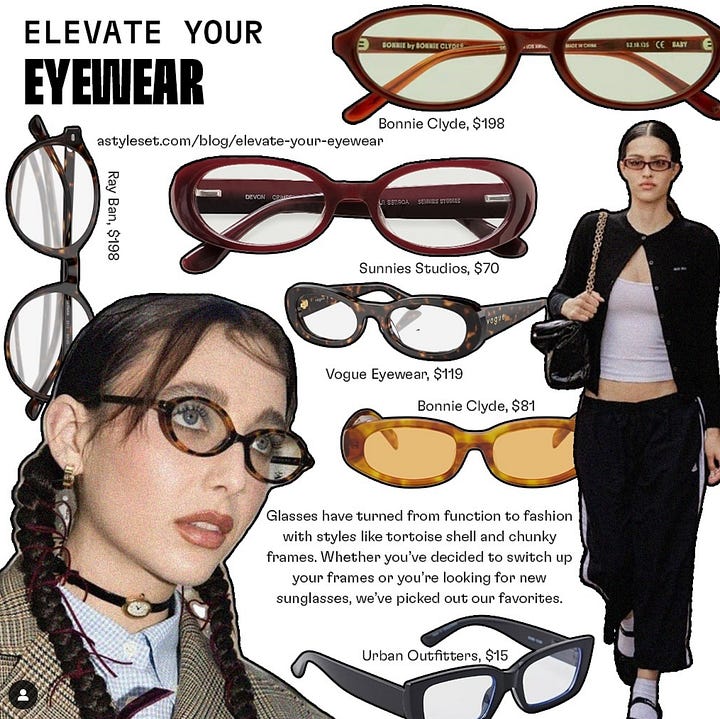
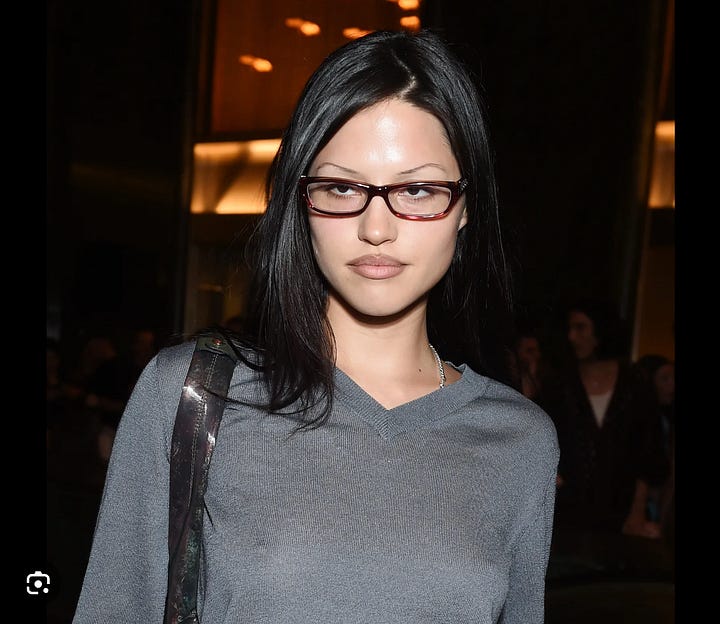
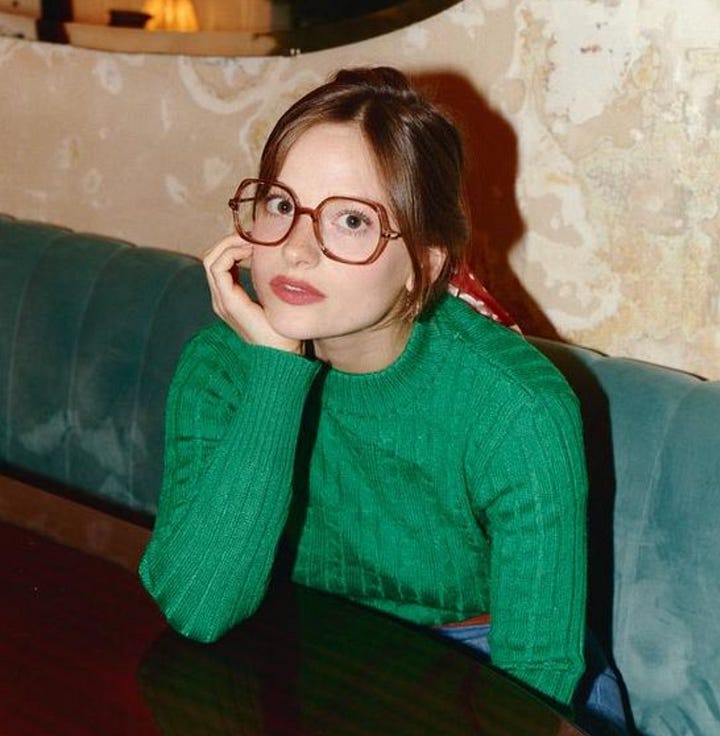
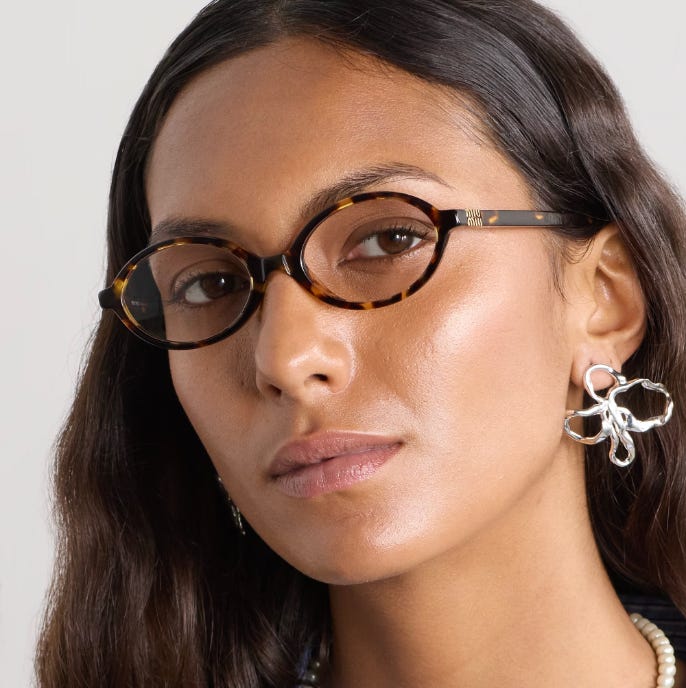
Ultimately, Superman is a beacon of hope in an imperfect world. Superman’s alter ego of Clark Kent links that aspiration to the every man. And now, Saint Laurent bottles this dream, and sells it in the form of neutral work wear and glasses.
P.S.
I want to finish off here by saying that this piece is more observation than criticism. I quite enjoy our current direction as consumers. Especially, when it comes to replacing overconsumption with a desire to spark joy with every little item you buy, and intentional gratitude for every little thing you own.
A few notes on how I’ve leaned into this movement recently and its impact so far…
I’m not allowed to buy something new until I use up the one I already own. This
gives me time to find the very best alternative,
adds excitement to the day to day as I encroach on empty,
makes typically unremarkable purchases feel special, and
reduces both physical and financial waste,
de-incentivizes impulse buying. Stop in a cute shop (or even just your regular shmegular TJ Maxx) and see an eye catching soap? Well do you really want that to be your ONE soap purchase? More than all the other soaps you’ve been eyeing? I didn’t think so.





